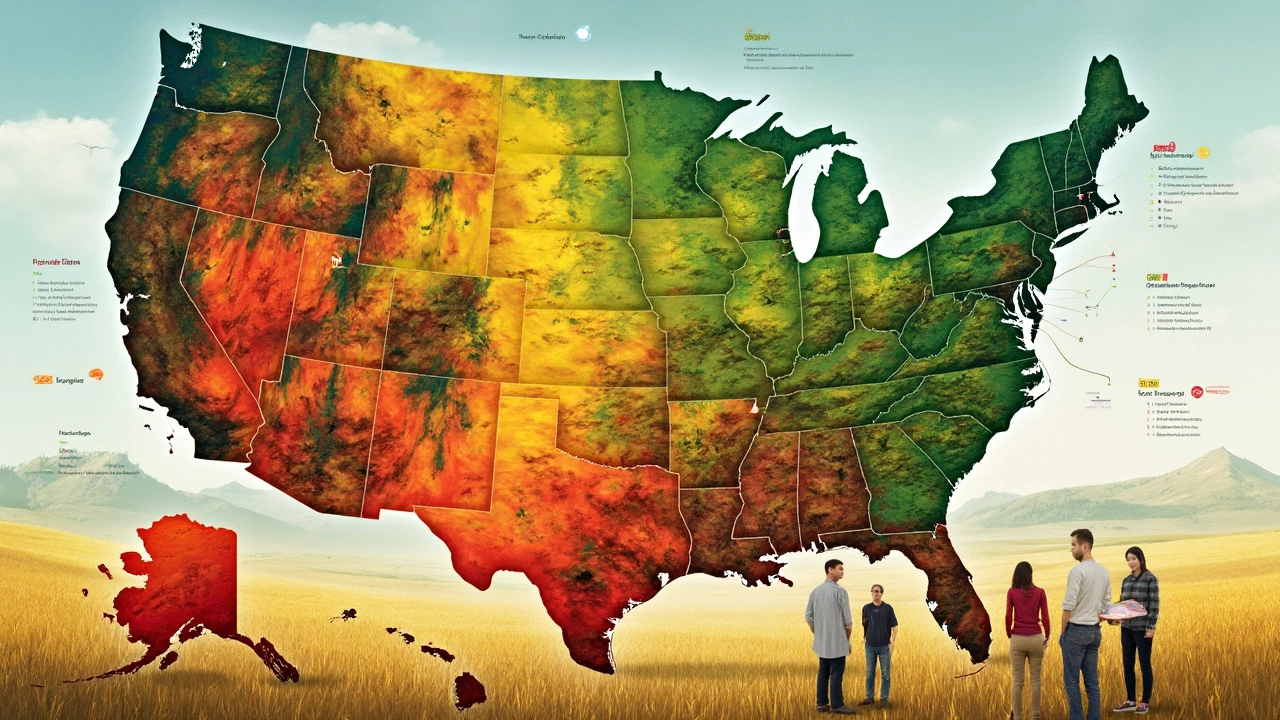Fertile Land USA: Your Practical Guide to Buying Productive Property
If you’re dreaming of a farm, ranch, or just a piece of land that actually grows something, you’ve landed in the right spot. "Fertile land" isn’t just a buzzword – it’s a mix of good soil, water access, and location that lets you get the most out of every acre. Below we break down how to spot that sweet spot, check the numbers, and lock down a deal without the usual headaches.
What Makes Land Truly Fertile?
First, look at soil. A quick soil test (often free from local extension offices) tells you pH, organic matter, and nutrient levels. Rich, loamy soil with a pH between 6 and 7 works well for most crops. Next, water. Natural springs, streams, or reliable well water are gold. Even if the land is flat, a good irrigation plan can turn marginal plots into productive fields.
Don’t forget climate. Different regions of the USA support different crops – think corn in the Midwest, citrus in Florida, or nuts in California’s Central Valley. Check the USDA Plant Hardiness Zone map to see if the climate matches your farming goals. Lastly, think about topography. Gentle slopes help with drainage, while steep hills can cause erosion and limit machinery use.
Steps to Secure Your Dream Farm
1. Set a realistic budget. Fertile land prices vary wildly – from $2,000 per acre in some parts of the Midwest to over $20,000 in high‑demand California valleys. Use online listings and local agents to gauge the market in your target state.
2. Map the acreage you need. For a small hobby farm, 20‑40 acres might suffice. If you plan to raise cattle, the rule of thumb is about 1.5‑2 acres per head on good pasture, though that can stretch to 20 acres per cow on poorer land. Our post on "How Many Cows Per 20 Acres" offers a quick reference.
3. Verify zoning and land‑use regulations. Some counties restrict livestock or certain crops. A quick chat with the county planning office saves you from a costly surprise later.
4. Conduct a title search. Make sure there are no hidden liens, easements, or mineral rights that could bite you later. Hiring a local real‑estate attorney is cheap insurance.
5. Arrange financing. Agricultural loans from USDA or local banks often have lower down‑payment requirements (sometimes as low as 10%). Your credit score matters – aim for a score above 680 to get the best rates.
6. Do a walk‑through. Look for visible signs of fertility: healthy grass, absence of standing water, and a mix of native trees that can indicate good soil depth. Bring a notebook and take photos – you’ll need them for the final offer.
7. Make an offer. Base it on recent sales, the land’s condition, and any needed improvements. If the seller is motivated, you might negotiate for a lower price or seller‑paid closing costs.
8. Close the deal. Review all documents, sign the deed, and transfer funds. After closing, update the title with the county recorder and set up any necessary water or utility connections.
With these steps, you turn the hunt for fertile land into a systematic process instead of a guessing game. Remember, the best land isn’t always the cheapest – it’s the one that fits your farming vision and lets you grow profitably for years to come.
Ready to start? Grab a soil test kit, map out your ideal acreage, and browse listings on reputable sites. The perfect plot is out there, and with a clear plan you’ll be on the field faster than you think.





